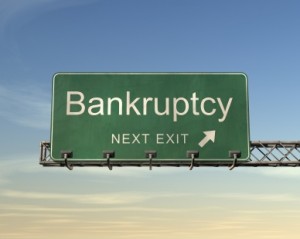 BAPCA, the “Bankruptcy Abuse Prevention and Consumer Protection Act” was proposed by Wall Street lobbyists, passed by Congress and signed into law on April 20, 2005.
BAPCA, the “Bankruptcy Abuse Prevention and Consumer Protection Act” was proposed by Wall Street lobbyists, passed by Congress and signed into law on April 20, 2005.
According to a new study by the Federal Reserve and Columbia University economists, the data from post-BAPCA bankruptcy filings indicates that creditors are in a better position and consumers are in a weaker position following the law’s enactment.
“We cite research … suggesting that profitability has risen for credit card companies as a result of BAPCPA,” Albanesi said. But consumers have suffered. Low income Americans, those most in the need of help, have been the most deeply damaged by changes that made it more difficult and far more expensive to file for protection under bankruptcy laws. “Our analysis suggests that the 2005 bankruptcy reform caused a decline in bankruptcy filings, which were replaced by a sizable rise in insolvency and foreclosure,” the study’s authors reported. “We show that insolvency is a state associated with a high degree of financial distress in comparison to bankruptcy. This consequence of BAPCPA is potentially welfare reducing for households.”
The study, which was published in January and summarized this week in a Federal Reserve blog post, reached a variety of conclusions about BAPCA. Few of the economists’ findings were encouraging for consumers. The bottom lines of credit card companies, banks and other financial institutions have been nourished by the act. Bankruptcy alleviates financial stress on consumers; insolvency creates it.
Under bankruptcy law pre-BAPCPA, there were two separate bankruptcy procedures, Chapters 7 and 13. Most unsecured debt was discharged under both. Debtors who filed under Chapter 7 were obliged to repay only from their wealth above an exemption level, while debtors who filed under Chapter 13 were obliged to repay only from their post-bankruptcy incomes. Debtors were allowed to choose between the two procedures, so that they could choose to repay from whichever source they did not have.
Under BAPCPA, both bankruptcy procedures have been retained, but debtors’ right to choose between them has been abolished. To file under Chapter 7, debtors’ incomes must pass a complex “means test” that requires that their incomes be below a cutoff level that is based on median family income in their state. If their incomes are above the cutoff, they must file under Chapter 13 if they file for bankruptcy at all. Debtors who file under Chapter 13 must use all of their incomes above a consumption allowance for five years to repay. BAPCPA also instituted new requirements that more than double the costs of filing, from less than $1,000 to around $2,500. It also reduced the amount of debt that is discharged in bankruptcy, lengthened the minimum period that must elapse between filings, and required debtors to undergo credit counseling and take a debt management course, also at their own expense.